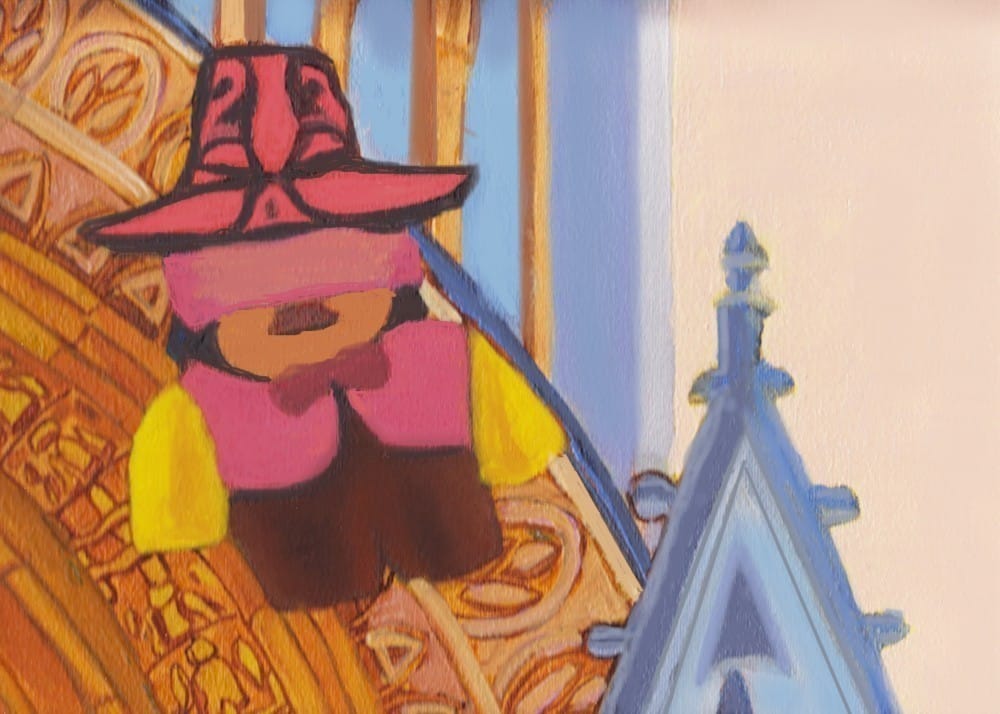The pattern’s journey evolved into ideas; this was and remains a concept in development, and the idea’s impression persists. The world’s persistent problems without a solution are a never-ending story. It is a painting with political content. In analyzing this painting, the piñata represents the peasant hit by the masked person, who is often seen as a symbol of the devil. It is part of a procession that dates back to medieval and ancient times among pagans.
It all depends on the point of view from which we want to interpret. Here, the Pinata is in front of the church. Mock rings at the religious in high positions and from being unable to fix the problems. The clown, a significant figure in the painting, is an extension of the social commentary. People celebrate the food that comes from within. Additionally, it represents the high-ranking politicians who often benefit from the suffering of the peasants.
During the creative process, my assistant created a few sketches at my request to explore this idea. Then, I recollected old churches from my pictures and sketches from Ecuador. The Pinata is everywhere in Brooklyn Knickerbocker. There is a Mexican party market where I got my model. I covered his eyes to recreate a state of unawareness toward the people and social biases happening in society. However, it was not as colorful and full of vitality as this one. Moreover, this Pinata and many other series were exhibited at Lehman College as part of my thesis. And nonetheless, a student commented that I repeated the same scene in different views, and I said that it was precisely a series.
Throughout, the concepts take different paths, such as other points of view in various scenarios. In short, the colors did not change; indeed, they became better and dazzling.
LA PINATA
La Pinata

